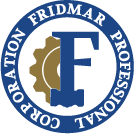
Generally, we are taught the importance of substance over form. In practice however, and especially in legal systems, there is an apparent importance placed on procedure as the “form”. If done incorrectly, improper compliance with procedure can void even the most meritorious of substantive matters. In the realm of civil litigation, these procedures are spelled out in the Rules of Civil Procedure, R.R.O. 1990, Reg. 194 (the “Rules”).
While construction litigation utilizes some of the procedures set out in the Rules, proceedings under the Construction Act, R.S.O. 1990, c. C.30, as amended (the “Act”) are subject to certain distinct requirements and allowances that differ from the processes set out under the Rules. In fact, under Section 87.2 of the Act, the Rules only apply to fill in gaps in the requirements of the Act. In this article, we will be discussing some of these procedural differences that general practitioners and members of the construction law bar may not know (in no particular order – hah).
Trial Records
As set out in Rules 48.01-48.04 of the Rules, once parties are ready to proceed to trial, they are required to “pass a trial record”, which contains all pleadings, orders, demands and responses to particulars, etc. This Trial Record signals to the Court that the parties are ready to proceed with trial and involves most jurisdictions in scheduling Pre-Trials or just placing the matter on the respective Trial Lists.
While a Trial Record may be filed at any time after the closing of pleadings, there are some negative side-effects of filing a Trial Record. Namely, pursuant to Rule 48.04(1) of the Rules, once a Trial Record is passed, parties are not able to initiate or continue any motion or form of discovery without leave of the court.[1]
Conversely, while it is not explicitly set out under the Act, it is entirely commonplace to pass a Trial Record in proceedings commenced under the Act. Partly, this is due to there being no explicit rights to discovery or motions under the Act.[2] It is also common practice to pass a Trial Record right after pleadings close as this complies with the obligation set out in Section 37 of the Act to set the proceeding “down for trial” before the second anniversary of commencement.
Adding Parties – Counter and Third-Party Claims
Under the Rules, there are mechanisms found in Rules 27 and 29 allowing Defendants to add parties into proceedings who were not included by the Plaintiff(s).
With respect to Counterclaims, Rule 27.01(2) indicates that a defendant who counterclaims against a plaintiff may join as a defendant to the counterclaim any other person, whether a party to the main action or not, who is a necessary or proper party to the counterclaim. Similarly, under Rule 29.01, a defendant may commence a third party claim against any person who is not a party to the action and who,
(a) is or may be liable to the defendant for all or part of the plaintiff’s claim;
(b) is or may be liable to the defendant for an independent claim for damages or other relief arising out of,
(i) a transaction or occurrence or series of transactions or occurrences involved in the main action, or
(ii) a related transaction or occurrence or series of transactions or occurrences; or
(c) should be bound by the determination of an issue arising between the plaintiff and the defendant.
So long as parties complying with the timing requirements set out in respective provisions, parties in ordinary proceedings operating under the Rules are allowed to issue Counterclaims and Third Party Claims as of right.
In stark contrast, parties litigating under the Act are never allowed to add an unrelated party by way of Counterclaim. Section 2(1)(a) of O. Reg. 302/18: Procedures for Actions under Part VIII of the Act (the “Act’s Regulations”) explicitly indicates that a defendant may counterclaim against the person who named the defendant as a defendant. Under the Act, the only way to add a new party is through Section 4 of the Act’s Regulations. Even then, Section 4(2) of the Act’s Regulations indicates that parties are only allowed to add third parties with leave of the court on a motion served and filed with notice to the owner and all persons having subsisting preserved or perfected liens at the time of the motion.
Practically speaking, most Superior Court of Justice filing offices in Ontario are not aware of this distinction and parties get away with non-compliance of these procedural requirements under the Act. However, if this non-compliance is found to delay the conduct of the proceedings commenced under the Act, there is a risk that costs may be made against the party and their legal representatives who fail to comply with these contrasting requirements.[3]
Service of Originating Process
“You’ve been served!” – for ordinary proceedings commenced under the Rules, there is a requirement to personally serve most originating processes (Statement of Claim, Notice of Application, etc.) directly onto the Defendants[4].
Under the Act, however, any documents – including originating processes – may be served by way of registered mail.[5] To make it better, Section 87(2) of the Act indicates that in the absence of evidence to the contrary, a document or notice sent to a person by certified or registered mail shall be deemed to have been received by the person on the fifth day following the date on which it was mailed, exclusive of Saturdays and holidays.
Practically, this means that – as long as you serve someone by registered mail and do not receive a return-to-sender slip, you can move to note someone in default without being required to provide evidence that the registered mail was received and accepted. The implications of this practice difference is severe where service is made onto new custom-build homes, especially where such homes are vacant.
So Much More
The above-noted are only three of many different procedural differences in proceedings commenced under the Rules and the Act. While some of these differences are minor, it is good practice to become acquainted with all the differences to ensure the most efficient and cost-effective way of moving your actions forward.
The foregoing is for informational purposes only and should in no way be relied upon as legal advice. If you have any further questions, or would like to schedule an appointment for legal advice tailored to your circumstances and business, please contact me at dan@fridmar.com.
[1] With the exceptions to this listed in Rule 48.04(2)&(3) of the Rules.
[2] Aside from Sections 39 and 40 of the Act, as well as in instances where leave is provided pursuant to Section 13 of O. Reg. 302/18: Procedures for Actions under Part VIII of the Act (the “Act’s Regulations”).
[3] See Section 86 of the Act.
[4] See Rule 16.01 & 16.02 of the Rules.
[5] See Section 87 of the Act.







